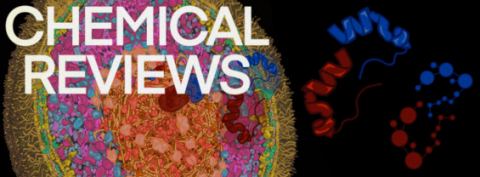Computational Approaches to Predict Protein–Protein Interactions in Crowded Cellular Environments

Exploring the mechanisms regulating protein-protein interactions (PPIs) is crucial for understanding both physiological and pathological cellular processes, given that proteins frequently operate within molecular complexes.
Experimental and computational approaches have yielded valuable insights into these interactions. However, understanding how the crowded cellular environment influences them still represents an open challenge. Cells are packed with molecules and other components that affect protein behavior, conditioning structural stability, diffusion dynamics, and the dynamics of binding.
Edoardo Milanetti and Giancarlo Ruocco, who have long been active in our Department in the field of PPIs, discussed in a review paper the most relevant computational methods for the investigation of these interactions [1]. Together with other co-authors from the European Synchrotron Radiation Facility and the Center for Life Nano & Neuro Science at the Italian Institute of Technology, and thanks to the significant contribution of the first author, Greta Grassmann (PhD. student in Life Science at our University), they foresaw a stronger connection between the crowding field and the in-silico techniques proposed to study isolated molecules, which in recent years have shown incredible breakthroughs.
The overview provided by the authors, encompassing both their methods and other ones available in the field, has been published in the high-impact journal Chemical Reviews.
Nowadays most computational studies in the crowding community implement simulations of increasingly complex systems by exploiting the recent improvement of computing power and Molecular Dynamics (MD) methods. Techniques that investigate how isolated proteins interact when nearby could be generalized to systems surrounded by crowded environments to better characterize them.
Among the latter, the authors, as experts in the field of in-silico techniques for the prediction of biomolecular interactions, described a new theoretical-computational methodology that allows for rapid and compact evaluation of the geometric and physico-chemical properties of putative binding regions.
Shape complementarity is a well-known feature of binding interfaces because during complex formation side chains have to rearrange to minimize van der Waals interactions. The computational cost of evaluating the energy on non-bonded interactions for each atom-atom interaction can get too high for increasing sizes of the binding-involved regions.
The method proposed by the authors provides an efficient solution. By expanding the iso-electron density surface patches, using a set of orthogonal polynomials (the Zernike 2D basis), and evaluating their complementarity as the Euclidean distance between the corresponding vectors, it identifies real binding sites in approximately 70% of the cases [2].
In addition to its competitive accuracy, this protocol stands out for its velocity, given by the rotational invariance of the Zernike polynomial based vectors. These numerical descriptors allow the comparison of surface patches without considering their relative orientation, making the method completely unsupervised and superposition-free. The reduced computational times enable the study of protein conformational variation in MD data in addition to the identification of binding sites in large datasets.
As underlined in the review, the integration of computational approaches with these features could improve the understanding of PPIs in the crowded cellular environment and the prediction of the interactomes of any organism for which the whole genome (and consequently, through structural prediction algorithms, the whole proteome) is known, including the human interactome.
[1] Greta Grassmann, Mattia Miotto, Fausta Desantis, Lorenzo Di Rienzo, Gian Gaetano Tartaglia, Annalisa Pastore, Giancarlo Ruocco, Michele Monti, Edoardo Milanetti. Chem. Rev. (2024)
[2] Edoardo Milanetti, Mattia Miotto, Lorenzo Di Rienzo, Michele Monti, Giorgio Gosti, Giancarlo Ruocco, Comput. Struct. Biotechnol. J. 19, 29-36 (2020)
Article:
https://pubs.acs.org/doi/10.1021/acs.chemrev.3c00550
